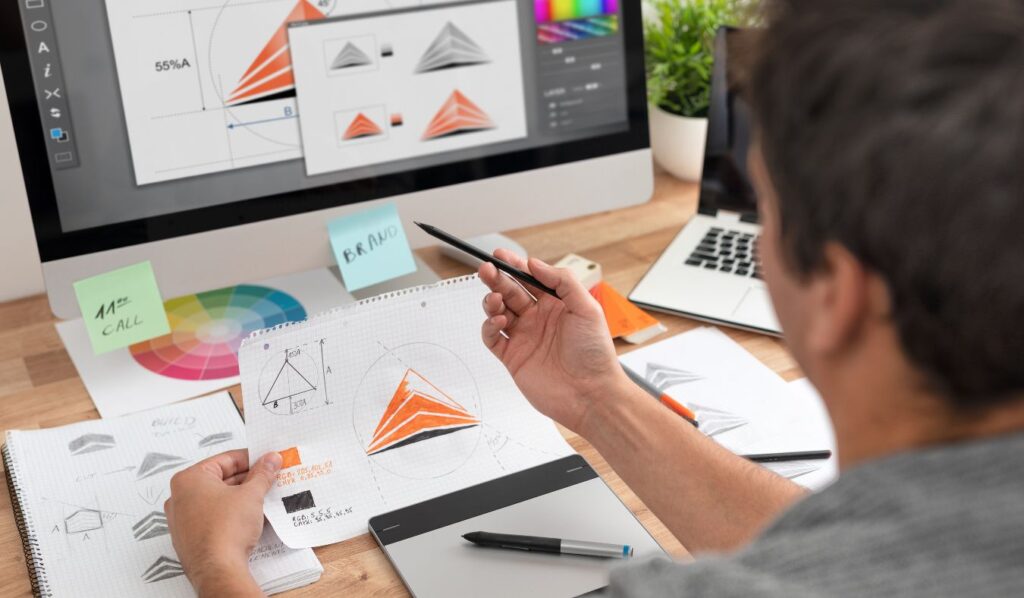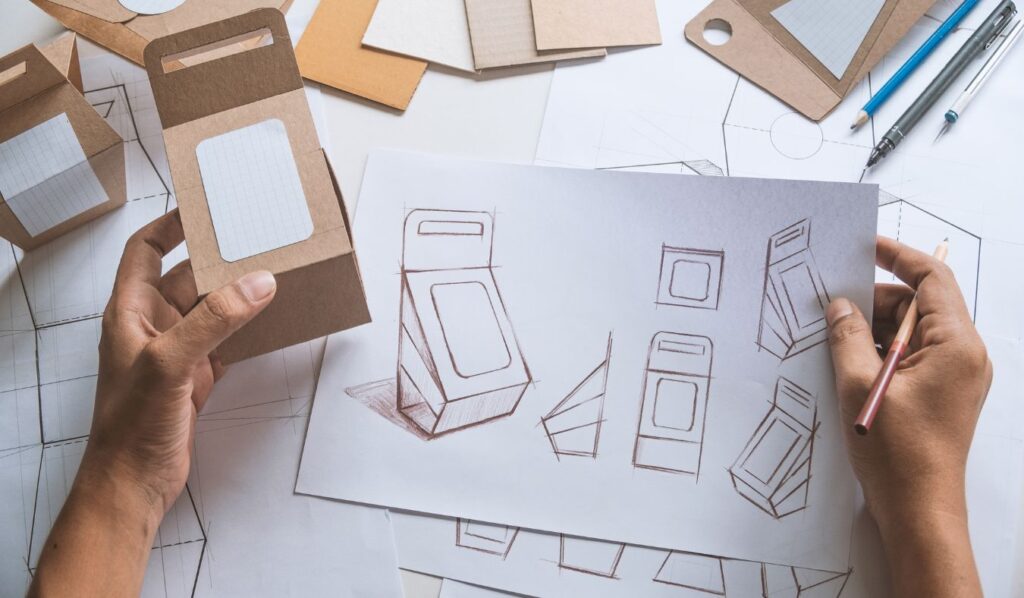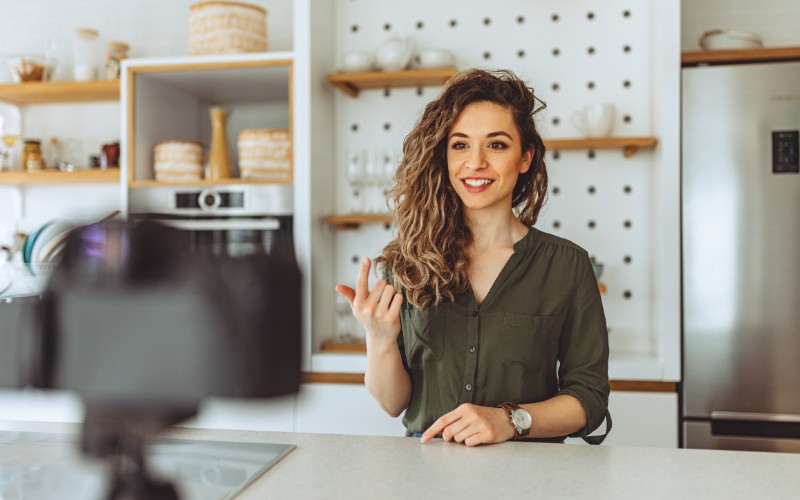Tea isn’t just a beverage; it’s a ritual steeped in tradition and offering a moment of sensory pleasure. Your tea label is the first step in that experience, setting expectations even before the first leaf is steeped.
The Power of Tea Packaging: A well-designed Tea label Design does far more than list ingredients. It has the power to:
- Capture Attention: In a crowded marketplace, your tea needs to visually stand apart from the ordinary.
- Tell Your Brand Story: Design choices instantly convey whether your tea is steeped in tradition, playfully modern, or focused on wellness benefits.
- Influence Perception: Even before the first sip, a beautiful label creates anticipation and signals the quality of what’s inside.
Diverse Target Market : From the casual tea drinker seeking a comforting afternoon cup to the discerning connoisseur exploring rare single-origin teas, the world of tea lovers is vast. Great label design finds the sweet spot between appealing to a wide audience while still making your brand uniquely memorable.
Brand Story Matters : Your label is a visual distillation of what makes your tea special. Are your blends rooted in a family tradition passed down through generations? Do you source ethically from small farms around the world? Is your focus on innovative and unexpected flavor combinations? The right design elements will wordlessly communicate this to potential customers.
Ready to design a tea label that truly reflects your brand and entices tea lovers? Let’s dive in!
1. Key Elements of Tea Label Design
While every tea label is unique, successful designs all masterfully balance these elements:
Logo & Brand Name
- Placement: Must be visible, but doesn’t always have to be dead center. Consider how it interacts with other label elements.
- Font Hierarchy: Make it clear what’s the brand name vs. the specific tea variety. Size and font weight guide the eye.
- Style Choices: Serif fonts feel classic, sans-serifs modern. Script can be elegant but ensure readability at small sizes.
Tea Type & Name
- Easy to Find: Don’t make customers hunt for basic info. Clear labeling builds trust.
- Readability: Font size AND style matter. Avoid overly decorative fonts for long tea names.
- Hints at Flavor: Bold, clean design for a strong Assam breakfast tea, softer colors and perhaps a floral element for a chamomile blend.
Imagery
- Photos: High-quality, well-lit shots of the tea leaves (loose or in a bag) or the prepared tea are enticing.
- Illustrations: Great for artistic brands, or to showcase ingredients in herbal blends.
- Brewing Instructions: Simple icons can be helpful, especially for less common tea types.
- Mood Setting: Abstract patterns, watercolors, etc., set a tone but shouldn’t compete with core info.
Color Palette
- Tea Type Associations: Greens for freshness, earthy browns for black teas, pastels for soothing herbals… start there, then add your brand’s twist.
- Brand Vibes: Luxury = rich jewel tones, playful = bright pops of color. Stay consistent across all your tea varieties.
- Accessibility: Ensure enough contrast between text and background for easy reading by everyone.
Texture & Shape
- Materials Matter: Textured paper adds a tactile experience, glossy labels feel high-end.
- Shape: Standard rectangles are cost-effective, but circles, ovals, etc., stand out IF they work with the container.
- Feel Factor: Does your label design support the brand story? Minimalist aligns with modern wellness, ornate suits traditional blends.
2. Inspiration for Your Tea Label
Finding your unique design voice starts with thoughtful research and a touch of creative experimentation. Consider these avenues:
Target Audience Research
- Who are you selling to? A budget-conscious college student vs. a buyer for a luxury spa will have wildly different expectations for tea packaging.
- Lifestyle & Values: Does your target customer prioritize organic ingredients, playful flavor experiments, or traditional tea ceremonies?
- Where is your tea sold? A grocery store shelf demands a different approach than a curated online boutique for tea enthusiasts.
Trends vs. Timeless
- Analyze the Trend: Look at current tea packaging trends (color palettes, typography, use of illustrations). Are they a good fit for YOUR brand?
- Longevity: Avoid chasing fads that will quickly make your label look dated. Strive for a balance of fresh and enduring.
- Classic with a Twist: Sometimes updating a single element (a pop of modern color on a traditional label) is the most effective way to stand out.
Competitor Analysis
- Map the Territory: Carefully examine tea brands within your similar price point and target market.
- Don’t Copy: The goal is to identify gaps you can fill or common design tropes to subvert in order to differentiate yourself.
- Look Beyond Tea: Inspiration can come from anywhere – chocolate packaging, perfume bottles, even interior design trends.
Mood Boards
- The Power of Visuals: Gather images, color swatches, font samples, and anything else that evokes the feeling you want your tea to inspire.
- Digital or Physical: Tools like Pinterest are great, but there’s something tactile about a physical mood board you can rearrange.
- Share & Iterate: Get feedback from potential customers or a design-minded friend to refine your vision.
3. Practical Considerations
Brilliant design means nothing if it can’t be executed well and within your budget constraints. Consider these factors carefully:
Label Size & Shape
- The Container Calls the Shots: Your label design MUST be tailored to your chosen tea packaging. A design that works on a tall tin might look awkward on a flat pouch.
- Maximize Usable Space: Account for how the label wraps around, or if there are multiple sides to design for (back, bottom, etc.).
- Unusual Shapes = Cost Considerations: While eye-catching, complex die-cuts or very large labels increase complexity and price.
Material Options
- Paper Versatility: From simple matte to textured or metallic finishes, paper offers a wide range at various cost points.
- Clear Labels: Showcase loose leaf tea beautifully, but design must be high-contrast for readability against the tea itself.
- Durability: Where will your tea be stored? Moisture resistance may be needed for teas sold in humid areas.
- Sustainability: Biodegradable or recyclable options are increasingly important to many consumers, and align with certain brand positions.
Printing Methods
- Digital: Good for smaller runs, quick turnaround, and the ability to easily personalize labels (unique codes for contests, etc.).
- Offset: Often more cost-effective for high volume, wider range of specialty materials and inks (think metallic, spot gloss).
- Other Options: Letterpress, foil stamping, etc., create a boutique feel but significantly increase production costs.
Legal Requirements
- The Non-Negotiable: Unfortunately, the most visually stunning label is useless if it gets your product pulled from shelves for non-compliance.
- Location Matters: Required information, font size regulations, etc., vary between countries and regions.
- Research is Key: Relevant government websites (FDA, etc., for your target market) are the source of truth, not just what you see on competitors’ labels.
- Room for Legalese: Ensure the necessary legal info doesn’t ruin your design aesthetic – plan for it from the start.
4. Tea Label Design Resources
Let’s make your tea label vision happen! These resources will help, regardless of your budget or design experience.
Free Design Tools
- Canva & Others: These platforms offer many pre-designed label templates, often with a free tier to get you started.
- Tea Templates: Focus search terms like “tea label template Canva” to narrow down the vast options.
- Limitations: Generic feeling if not heavily customized, and may not be suitable for complex label shapes.
Stock Image Sites
- Visual Storytelling: If you’re not using your own product photography, source high-quality stock images of tea leaves, brewing, ingredients, etc.
- Popular Options: Unsplash, Pexels, Pixabay for free options. Shutterstock, iStock, etc., for paid (often wider selection of tea-specific imagery).
- Licensing Matters: Ensure the image license allows for commercial use on your product packaging.
Tea-Specific Inspiration
- Pinterest Power: Search “tea packaging design” and similar terms. Create boards for mood boards or to track competitors.
- Niche Blogs: Many bloggers focus on tea reviews and culture, often featuring standout packaging design.
- Awards: Sites like The Dieline and others showcase packaging design awards – a great source of innovative ideas.
Finding a Designer
- When to Outsource: If you lack the design skills, time, or need highly custom results, hiring a pro is a smart investment.
- Portfolio is Key: Look for designers who have created tea labels successfully (ideally in a style that aligns with your brand).
- Communication: Do their work style and responsiveness mesh with your own? Design is a collaborative process.
- Beyond the Label: Consider if you might need a designer’s help with your overall tea branding (logo, website, etc.)
Ready to make your tea packaging as captivating as your tea itself?
Designing the perfect tea label requires both strategic thinking and a discerning eye for detail. If you’d like personalized support to elevate your tea packaging, feel free to contact Brand Sewa for a Free Tea Label Design Consultation.




